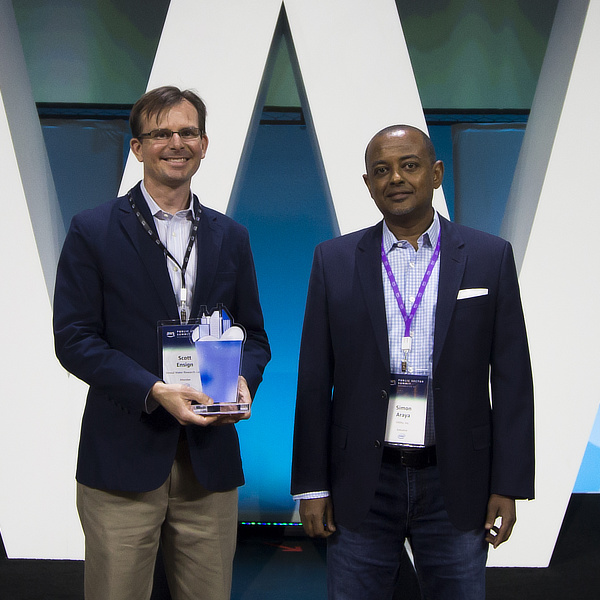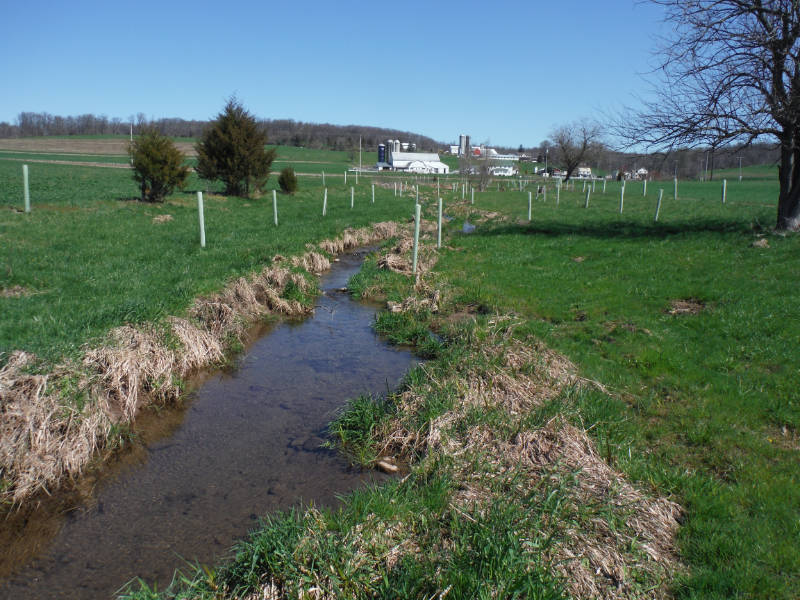The Economic Case for Watershed Restoration
Published on by Water Network Research, Official research team of The Water Network in Non Profit
In 2022, Amazon Web Services, a provider of on-demand cloud computing technology, announced its commitment to being water-positive by 2030, aiming to return more water to communities and the environment than it uses in its data center operations. The following year, the $2 trillion subsidiary of the world’s largest online retailer announced its partnership with Stroud Water Research Center to help meet its goal.
Using a science-based approach that prioritizes ecosystem health in the restoration of streams, rivers, and watersheds, the Stroud Center will work with farmers and agricultural landowners in northern Virginia to improve cropland management and plant streamside forests.
Together, AWS and the Stroud Center will recharge groundwater resources and return more than 67 million gallons of clean water to underground aquifers each year — water that’s needed for communities, ecosystems, and businesses to thrive.
The decision for AWS to offset its water use through a replenishment project is about more than caring for fresh water and the people, animals, and plants that depend on that water. It’s about sound business strategy that showcases innovation and long-term thinking. A partnership with the Stroud Center gives corporate entities like AWS access to groundbreaking science and restoration to achieve water stewardship goals that align the interests of people, planet, and profit.

Innovation and Partnership: The Stroud Center and AWS
Stroud Center Assistant Director Scott Ensign and Simon Araya from Utility Associates accept the “City on a Cloud Innovation Challenge” award from Amazon Web Services for the Model My Watershed project at the Walter E. Washington Convention Center in Washington, D.C., during the AWS Public Sector Summit in June 2018. Model My Watershed will be used in the water replenishment project with AWS to estimate environmental benefits. In 2021, AWS awarded the Stroud Center and partner LimnoTech, Inc. a grant to further develop Monitor My Watershed, a companion tool that’s also part of the Stroud Center’s open source WikiWatershed Toolkit.


Left: Newly planted trees grow inside protective tubes on a farm that’s part of a watershed restoration project in Pennsylvania. Right: Scientists Diana Oviedo Vargas, Ph.D., and Melinda Daniels, Ph.D., take soil cores from a farm field to measure the impact of conservation practices on soil health and water infiltration.
A Unique Approach to Restoration
The Stroud Center is first and foremost a scientific research institution focused on the study of freshwater systems. Science leads its approach to restoration, which prioritizes data-driven strategies that yield successful outcomes for streams and rivers — not as pipes that shoot water and any contaminants far away from sources — but as living ecosystems that are part of a larger watershed. The watershed restoration team works with Stroud Center scientists to incorporate the latest research on what makes freshwater ecosystems healthy into on-the-ground projects to protect and restore them from damage, most often from human impacts.
Seeing the impact that land use, including agriculture, has on the health of these systems, water flow and infiltration, and soil health, the Stroud Center works with farmers and landowners to adopt farm-management practices that protect and restore water resources for relatively low cost.
The AWS project will add soil health practices to 4,600 acres of farmland in the Bull Run and Broad Run watersheds, including no-till planting and cover crop systems. Funding from additional partners will support the planting and maintenance of streamside forests using methods that the Stroud Center has shown can significantly increase the survival of young, newly installed trees. These measures are expected to increase infiltration and groundwater recharge while also reducing stormwater runoff, flooding, water inefficiency, and water pollution from sediment and nutrients.
The Economic Benefits of Watershed Restoration
In addition to supporting freshwater ecosystems, watershed restoration can fuel economic growth, cut costs, create jobs, and provide opportunities for businesses large and small.
Attached link
https://stroudcenter.org/news/the-economic-case-for-watershed-restoration/?utm_source=Freshwater+E-News&utm_campaign=2b589459c4-EMAIL_CAMPAIGN_2025_UPSTREAM_ISSUE_5&utm_medium=email&utm_term=0_a326fc58bf-2b589459c4-123397504Taxonomy
- Watershed Management
- Economics
- Watershed
- Restoration
- Water Well Casing
- flood restoration